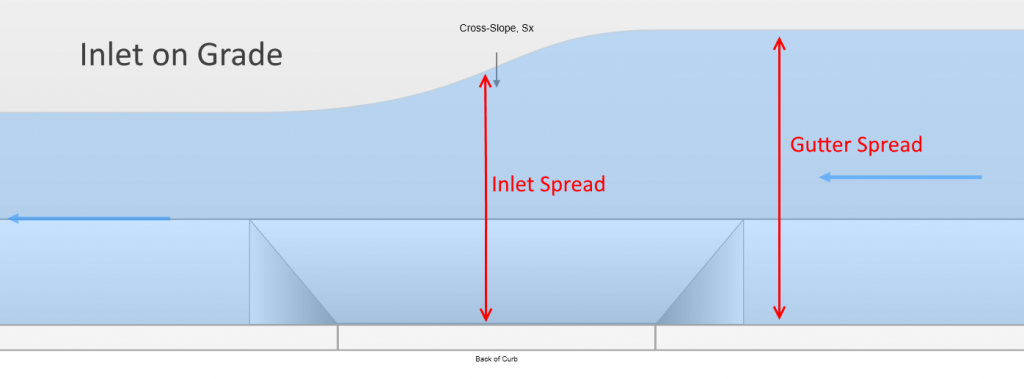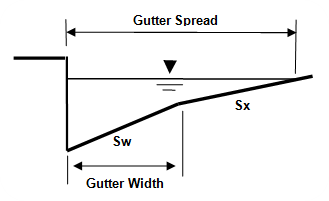You’ll notice on the screen and printed reports, two categories of spreads:
- Gutter
- Inlet
For inlets located in Sags, these two will be the same and are calculated from the specific inlet type’s methodology described here. The depth or elevation computed at the inlet face is simply translated upstream to the gutter.
For inlets On Grade, the Gutter Spread refers to the spread just upstream of the inlet and is based on the gutter properties, flow, etc. described below. Inlet Spread refers to the spread at the center of the inlet face. Those calculations are described here.
Plan View of Inlet On Grade

Cross-section of Inlet Spread

Cross-section of Gutter Spread

Gutter Spread for Inlets On Grade
Gutter spreads for inlets on a continuous gutter slope are based solely on the gutter properties (basically an open channel) are not affected by the inlet itself. Stormwater Studio uses the following form of Manning’s equation to compute the depth of flow in the gutter:

Where:
D = depth of flow in gutter in ft (m)
Q = flow in gutter in cfs (cms)
Z = reciprocal of the cross slope
S = longitudinal gutter slope
Kc = 0.56 (0.376)
For compound cross slopes, a trial and error procedure is used to compute D in the gutter, (Sw) and (Sx) sections separately. From this depth and cross-section geometry, the gutter spread is computed. This depth and spread is labeled “Gutter Depth” and “Gutter Spread” respectively in the reports.

When Gutter Spread Exceeds the Maximum
Inlet spread widths are typically based on the dictates of local regulations. If the maximum allowed spread width is exceeded, the design must be adjusted by relocating the inlet to a point upstream in the curb and gutter section which will reduce the drainage area, the peak discharge, and thus the spread width. Repeat this process until the spread width is at or below the allowable.
